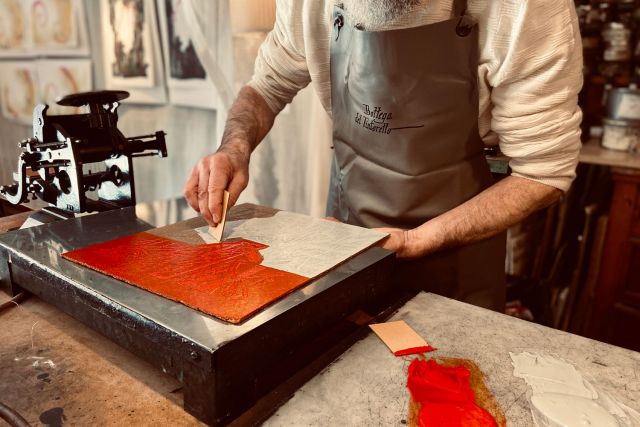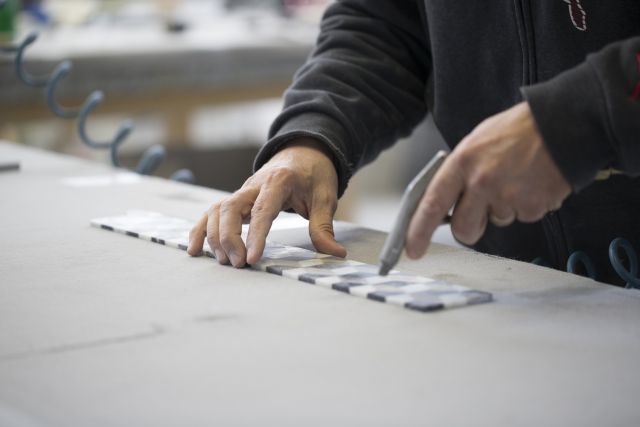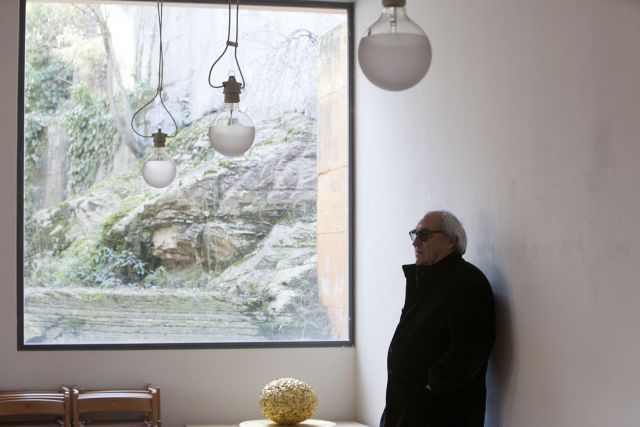Inclined octagonal table mirror made of inlaid scagliola. On the upper face it has a circular mirror embedded in the surface. The design mixes a delicate grey colour and an even lighter tone. The inspiration comes from the knob on top of Bialetti moka pot: that’s why the object is called Alfonso, after Alfonso Bialetti.
Height 32 cm
Diameter 27 cm
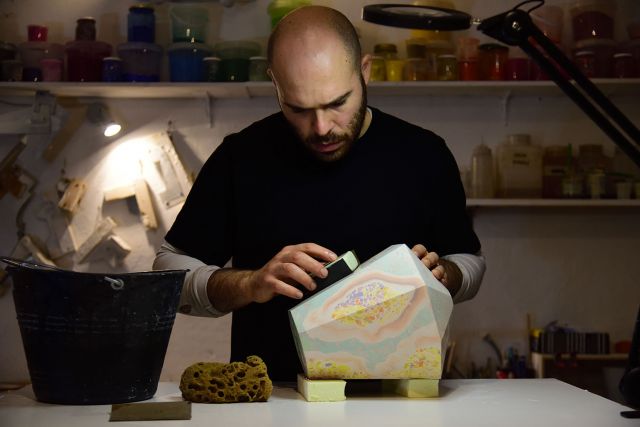
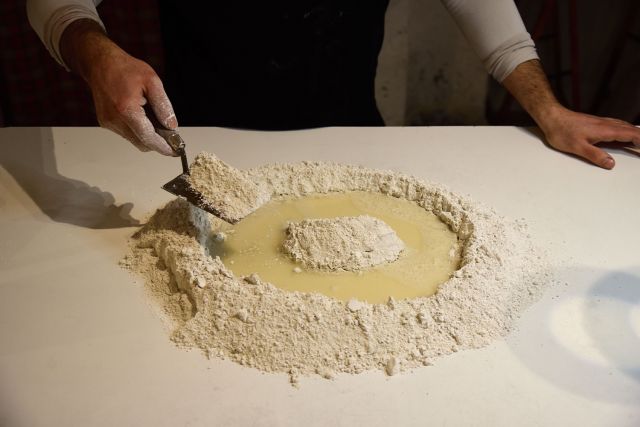
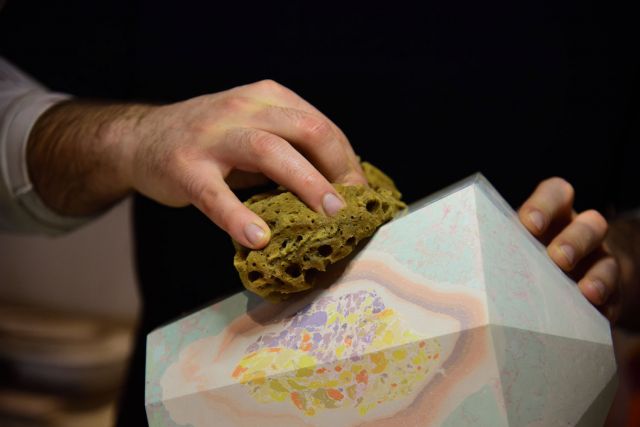
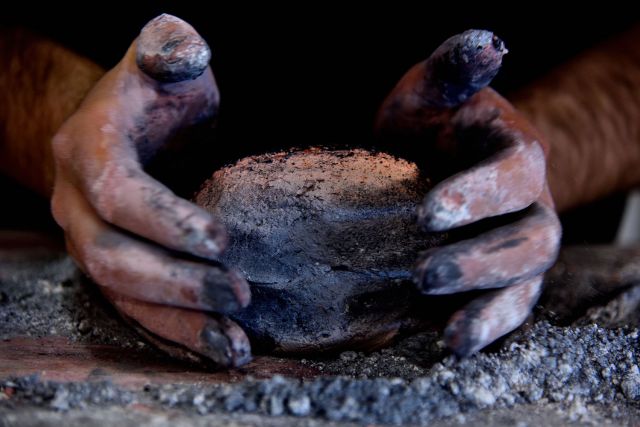
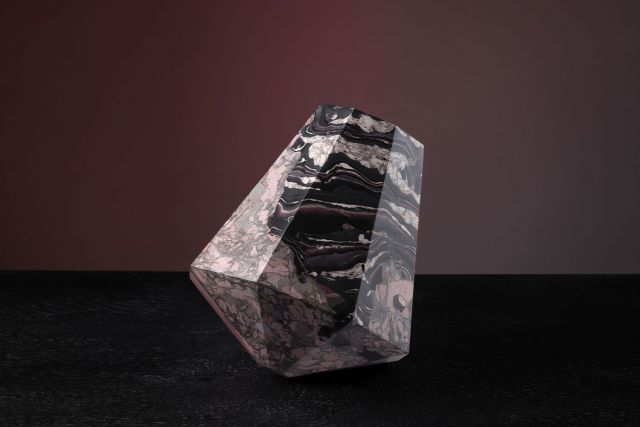
Claudio Campana
- Scagliola maker
- Castelfiorentino, Italy
- Rising Star
By appointment only
Marble effect
- • Claudio is one of a few artisans using the scagliola technique
- • Scagliola is a Baroque technique imitating marble with plaster
- • His artworks are a combination of tradition and modern design
Claudio Campana is an illusionist. His creations look like they are made of marble, but in fact they are not. "My technique is called scagliola and uses a mixture of plaster, natural pigments and animal glue to imitate the better-known, more expensive material," he explains. The technique was very popular in Baroque and Rococo architectures for stairs, columns and walls, but fell into disuse at the beginning of the 19th Century. Nowadays scagliola artisans are just a handful and quite protective of their secrets. But young Claudio who discovered this art while specialising in Artistic Moulding in Turin was fortunate enough to meet a generous master. "Mauro Patrini was one of my professors at the European Centre for Restoration in Thiene, where I studied in 2020," he says "He taught me everything I know."
Read the full interviewWorks
Photo: © Monstera Lab

Photo: © Monstera Lab
Heptagonal-based candelabra made of scagliola. The colour is deep black with a band of ochre coloured stones and green and purple veins.
Height 41 cm
Diameter 23 cm

Photo: © Monstera Lab
Heptagonal-based candelabra made of scagliola. The colour is intense yellow, spotted with light blue and purple and orange veins.
Height 41 cm
Diameter 23 cm

Photo: © Monstera Lab
Mannequin made of inlaid scagliola and papier-mâché and coated with shellac. The torso is a 3D cast of a real one, reproduced in shiny black. The wall frame is made of black scagliola veined in white and is decorated with a contrasting white inlaid disk.
Length 27 cm
Width 67 cm
Height 78 cm

Photo: © Monstera Lab
Square mirror with scagliola frame. The colour is bright pink with intense white veins and darker bands.
Length 5 cm
Width 45 cm
Height 45 cm





